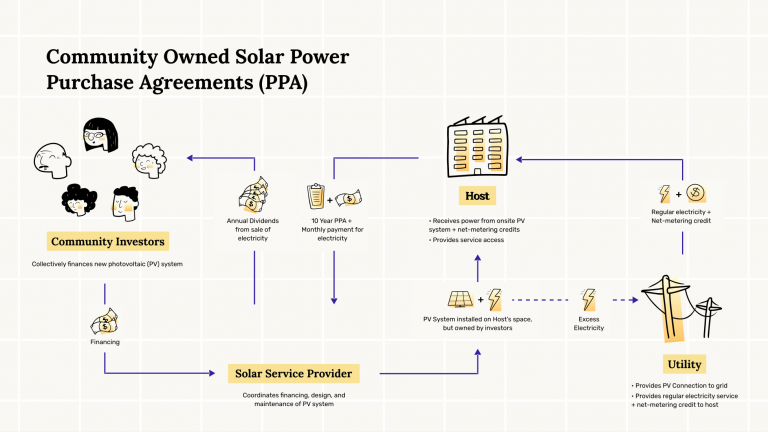Solar Energy PPAs on BC Government Buildings

We write to you today to ask for your support in strengthening the capacity of rural and remote communities to have resilient (secure, reliable, diversified) and renewable energy sources and in reducing green house gas emissions. We know this aligns with BC’s goals for energy supply per the guidebook on Clean Energy Production in B.C. (BC 2016). Supporting renewable energy in rural and remote communities also aligns with the goals of greenhouse gas reduction legislated in our Climate Change Accountability Act (BC 2017).
We request the BC Government to develop clear policies that will empower communities to move forward with renewable energy projects. Specifically, we request a policy to support solar Purchase Power Agreements (PPA) for government-owned facilities on remote diesel grids, in British Columbia Hydro’s non-integrated areas.
Solar Power Purchase Agreements are an effective way for the BC Government to reach its climate targets, decrease government expenditures, and local support electricity self-sufficiency. Under a PPA a solar energy system is installed on a government building at no cost to the government. The system is not owned by the government but they do use the electricity generated by the system. The system can be owned by the local community, increasing local buy-in, a local sense of ownership, as well as local jobs. This model has already been used in BC on non-government buildings.
The government department does pay for the electricity produced by the system. They also still purchase any additional electricity needed from the utility. In some cases the solar energy could be sold at a lower rate and save the government money. This PPA model has been approved by the BC Utilities Commission (https://www.ordersdecisions.bcuc.com/bcuc/orders/en/item/119448/index.do) and is supported by BC Hydro (https://www.bchydro.com/work-with-us/selling-clean-energy/net-metering.html).
We are proposing this model be used in areas that are not part of BC Hydro’s integrated grid and rely on diesel power.
We recently approached two different BC government entities about using this model. In both cases, they would not even consider the proposal even though it would mean both monetary and GHG savings at no cost to them. Both sites were in communities served by diesel power so the GHG savings would have been significant. The solar energy systems would have been partly or completely owned by local indigenous communities.
The province of Alberta recently signed an agreement for 94 MW of solar through a PPA (https://www.renewableenergyworld.com/2019/02/15/alberta-government-signs-ppa-for-94-mw-of-subsidyfree-solar/ ). The Alberta project is a “front of the meter” PPA sometimes called a Virtual PPA. In BC the PPAs would generally be behind the meter which has some advantages. As far as we know BC has not explored the solar PPA option.
We think the BC government should develop a policy that encourages government departments to pursue community-owned solar PPAs at sites where there is a good financial and environmental case.
The graphics above help explain how a PPA work and provide a case study of how it might work on a government building.
Sincerely,




